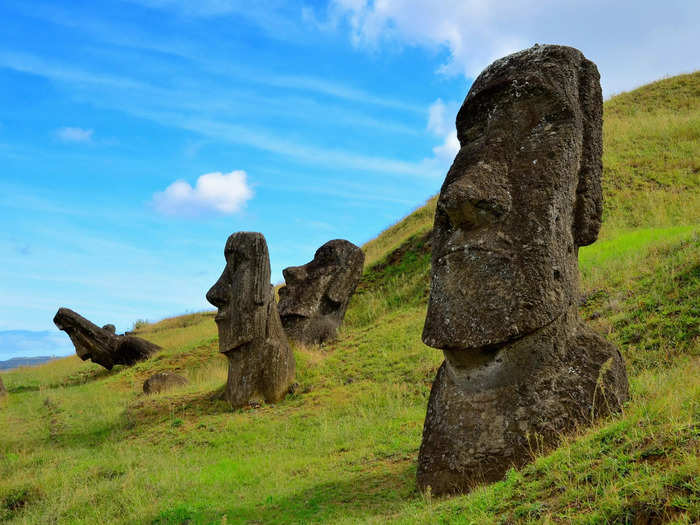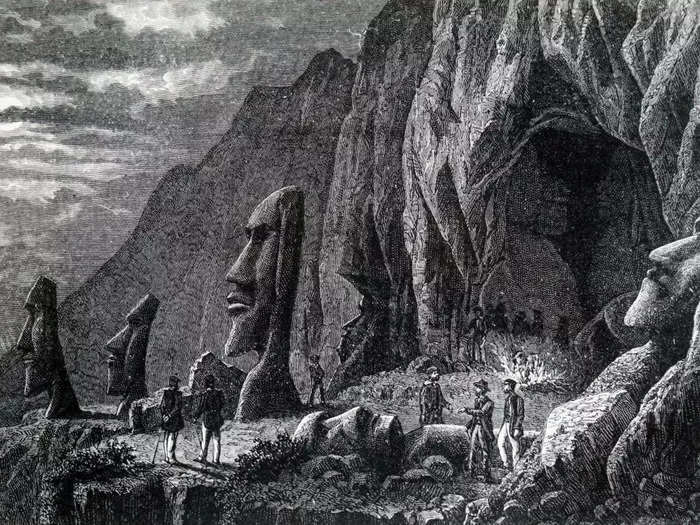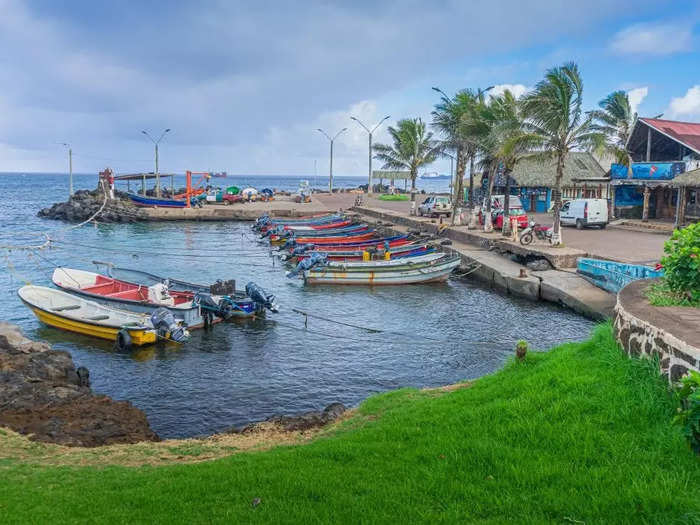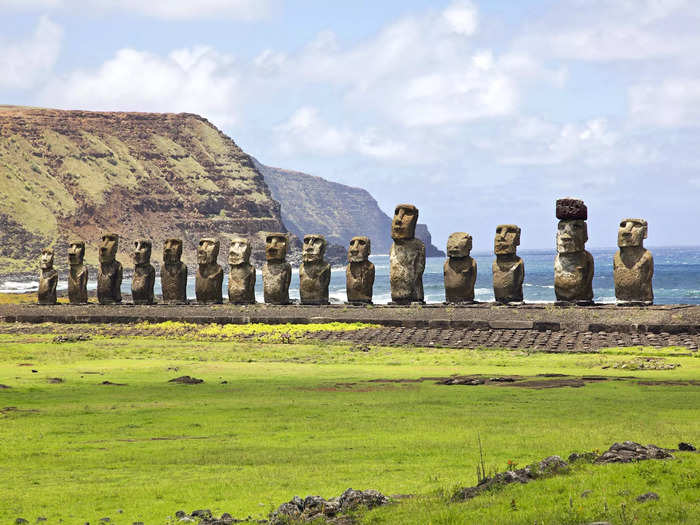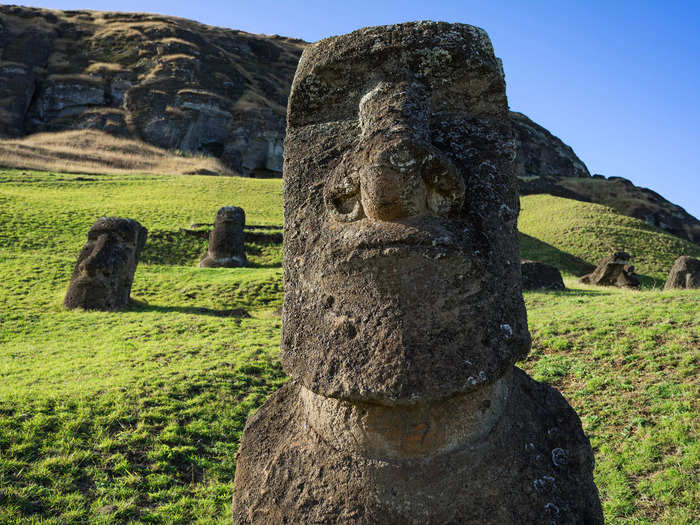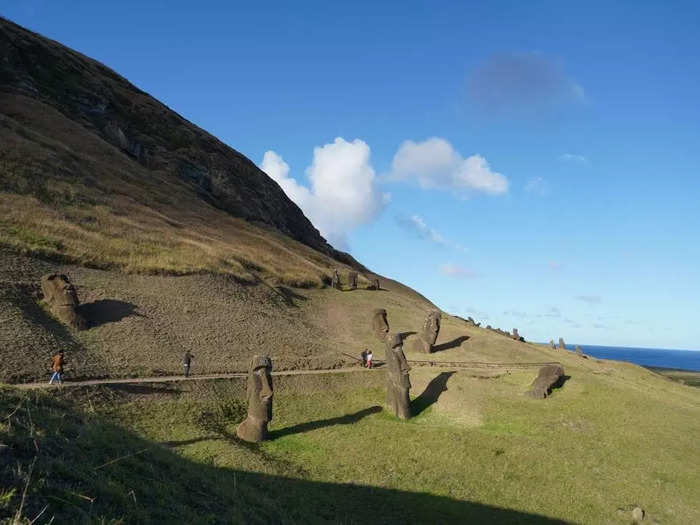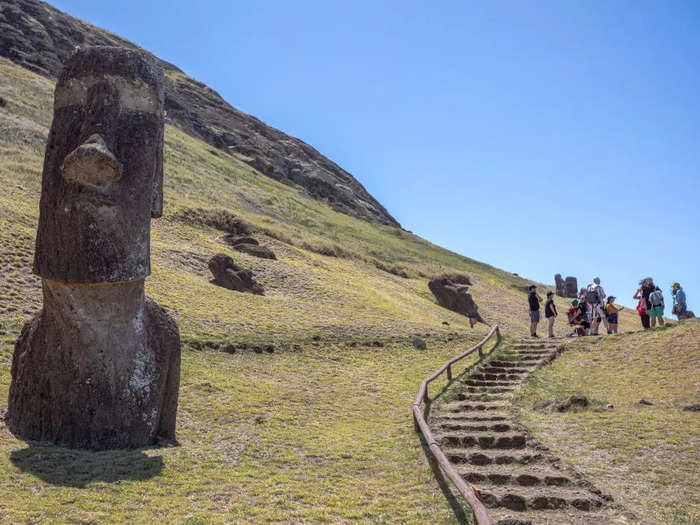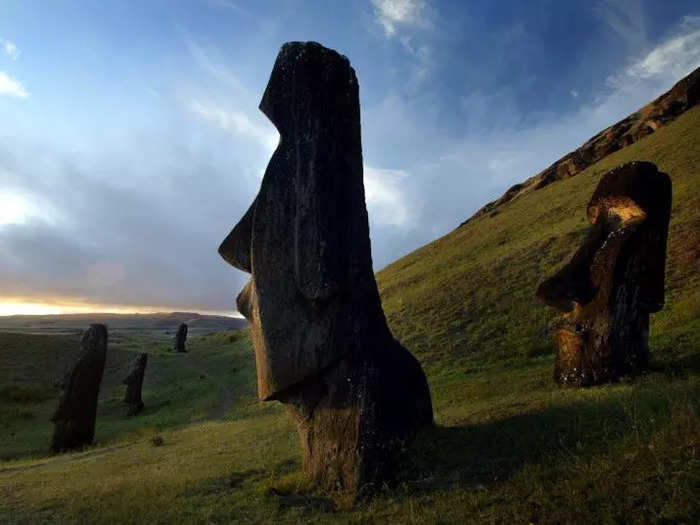A statue on Easter Island.David Slotnick/Business Insider
- Easter Island in the southeast Pacific is one of the most remote inhabited places in the world.
- The island is famous for its enormous stone statues known as moai.
Easter Island is one of the most remote inhabited places in the world.
Statues on Easter Island. Annu Kostiainen/Shutterstock
The 63-square-mile island is located in the southeast Pacific, about 2,200 miles west of Chile.
Visiting Easter Island requires a six-hour flight from Santiago, Chile. Only one airline, LATAM, services the island.
It got its name after Dutch explorer Jacob Roggeveen spotted the island on Easter Sunday in 1722.
An 19th-century engraving depicting the Moai carved by the Rapa Nui people on Easter Island. Universal History Archive/Universal Images Group via Getty Images
Roggeveen stayed on the island for a week, observing the native residents' culture and way of life and noting the "remarkably tall stone figures they set up."
Today, those indigenous to the land call the island Rapa Nui, named for the Rapa Nui people.
As of the latest census, taken in 2017, the population of Easter Island was 7,750.
Boats moored at a pier in Easter Island. MIGUEL CARRASCO/AFP via Getty Images
Most of its residents live in the main town of Hanga Roa.
The island is famous for its enormous stone statues known as moai.
Statues facing inland on Easter Island. Shutterstock / Bryan Busovicki
The statues were built in the late 1500s and early 1600s, though some date back as far as 1300.
A statue on Easter Island. David Slotnick/Business Insider
Polynesians likely began inhabiting the island around 1000 CE.
The purpose of the moai remains a mystery to researchers.
The coastline of Easter Island. PABLO COZZAGLIO/AFP via Getty Images
A 2019 study published in PLOS One, a journal by the Public Library of Science, found that the monuments were often constructed near sources of fresh water, leading researchers to theorize that the statues played an important role in community building around natural resources. However, not all Easter Island experts agree that the small freshwater seeps were important enough to warrant the massive statues, The Guardian reported.
Archaeologist and Easter Island expert Jo Anne Van Tilburg believes the moai were built to honor ancestors and chieftains, or for ritual use to commune with gods, she told PBS.
National Geographic reported in 2022 that there were 1,043 complete statues on Easter Island.
Tourists walk past a moai. Rafael Arancibia/picture alliance via Getty Images
In February, scientists found a previously undiscovered statue in a dry lake bed inside a volcanic crater.
Moai statue. Thomson Reuters
"We think we know all the moai, but then a new one turns up," Terry Hunt, an archaeologist at the University of Arizona, told "Good Morning America."
The statue is just over 5 feet tall and was found lying on its side in a lake that has been drying up for several years. Carbon dating will be used to determine its age.
Salvador Atan Hito, vice president of the Ma'u Henua indigenous organization that manages the site and its archaeological findings, called it a "very, very important discovery" through a translator.

